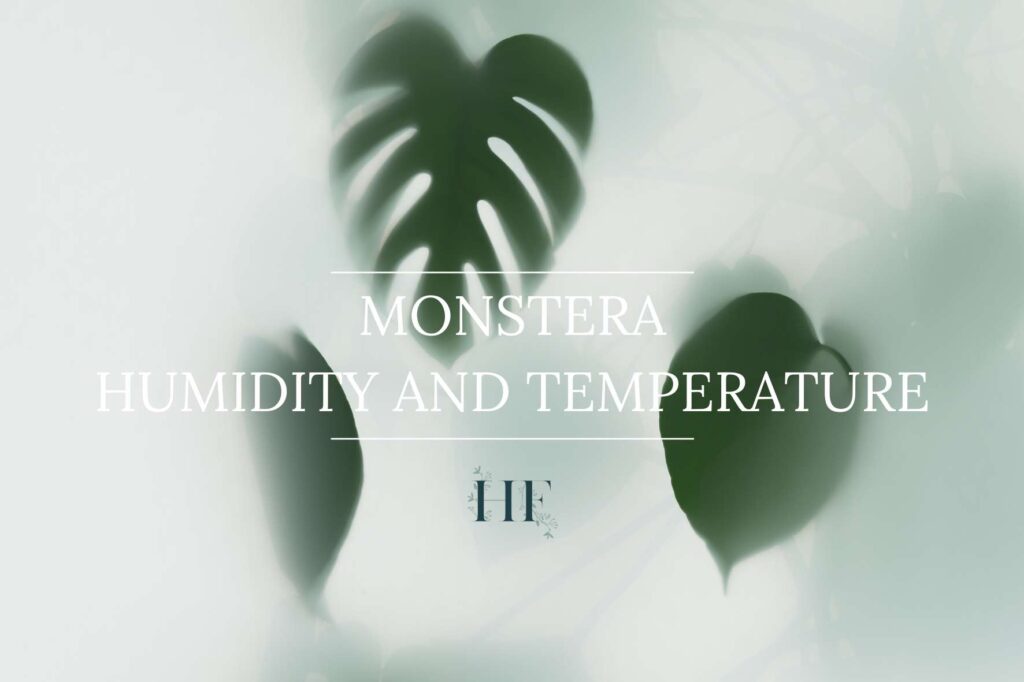Monstera is a tropical plant whose natural habitat is highly humid. While there’s no comparing the humidity of a tropical forest to the humidity levels in most homes, you can still provide the humidity your Monstera needs to thrive.
Let’s talk about Monstera humidity and temperature needs, and how you can increase the humidity levels if needed.
Monstera Humidity
Does Monstera Like Humidity?
The Monstera genus is native to tropical regions of the Americas where humidity levels are knowingly higher compared to what you have at home.
In the wild, Monstera plants enjoy a humid tropical climate throughout the year with medium to high humidity levels (60 to 80%) and temperatures between 68°F to 86°F (20 to 30°C ). However, you do not need to mimic these conditions precisely inside your home for a Monstera to grow healthy indoors.
As houseplants, Monsteras thrive in humid environments, especially those with a humidity level between 40% to 60%. This range is also applicable for variegated Monsteras.
Keeping your indoor temperature steadily above 60°F (16ºC) and indoor humidity between 40-60% should provide a good enough environment for any Monstera to grow healthy and in optimal conditions.
The main reason that Monstera needs humidity is to undergo photosynthesis. If your Monstera plant doesn’t get enough water, the stomata will close. If that happens, carbon dioxide will be blocked, hence the photosynthesis process will be interrupted.
Due to its large leaves, a Monstera requires a generous amount of water intake. And the best way to aid the watering needs of Monstera is by placing it in a humid environment.
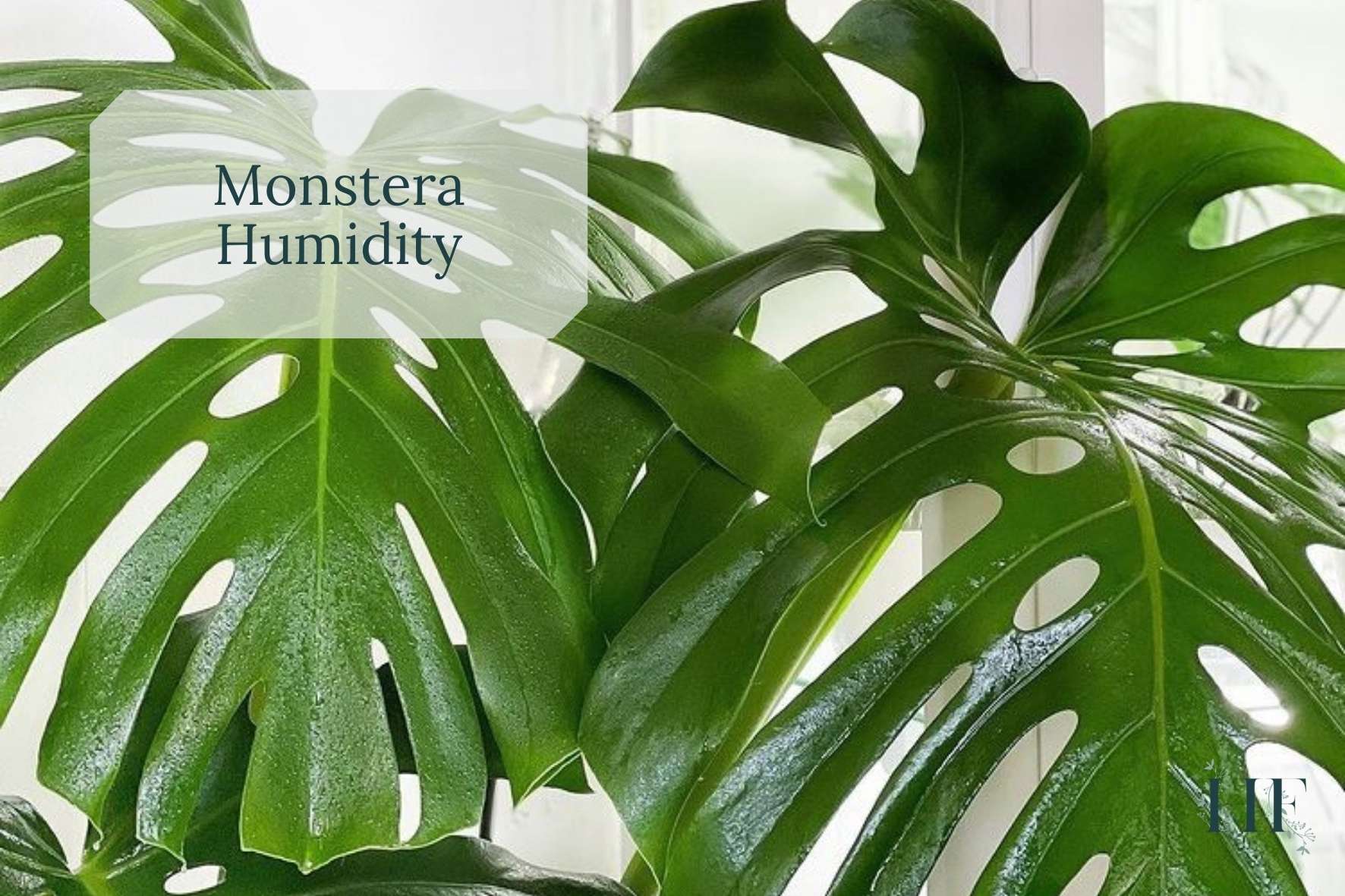
How Much Humidity Does a Monstera Need?
Monstera humidity needs range between 40% to 60%.
If the humidity is below 40%, Monsteras will dry out faster, needing water more often to avoid dry tips. Monstera leaves will start to turn yellow or brown and eventually will drop off.
However, if the humidity is above 60%, water can start to condense on your Monstera leaves and it can lead to rot, mould and fungus.
You can measure humidity levels with a hygrometer, which I will explain further down.
How Do I Know If My Monstera Needs More Humidity?
These are the signs that a Monstera needs more humidity:
- Crispy leaves – they feel dry to the touch.
- Brown tips on the leaves.
- Yellowing leaves.
- Droopy and curling leaves.
- Monstera starts wilting and drooping leaves.
If your Monstera shows these signs, it can either be due to a lack of water or lack of humidity.
Insider Tip: If your Monstera plant has enough humidity, the leaves will be a deep green colour and feel soft to the touch. Also, the plant will be standing tall.
How Much Humidity Is Too Much for Monstera?
These are the signs that a Monstera has too much moisture (i.e. the environment is too humid):
- Damp leaves.
- Mouldy foliage and/or potting mix.
- Root rot.
- Mushy stem.

How to Measure Humidity Levels in Your Home
If you are in doubt if your Monstera is getting enough humidity, then you can check the humidity level of your house and the room your plant is in particularly.
You can measure humidity levels with a hygrometer, which will give you either a percentage or an absolute reading. Also, many hygrometers track temperature as well. This is helpful because you will know if the air around your Monstera is too cold or too warm (which also influences the humidity levels).
I recommend the ThermoPro hygrometer, which measures both humidity and temperature, plus, it’s portable and affordable.
The air temperature matters because warm air can hold more water than cold air.
Your immediate environment, both indoors and outdoors, makes a big difference in the relative humidity. For instance, if you live in a hot, dry location, it can be harder to maintain humidity in your home.
In winter, if you turn on the heating, the warm air will hold more moisture. As a result, the relative humidity goes down.
Of course, it’s also important to consider what level of humidity is comfortable for you and your family. For most people, that’s between 40 to 55%.
If the humidity is too high, you risk mould growing in your home (I have been there, and it’s not fun). On the other hand, too low humidity and your lips will crack (i.e. your skin will dry up).
Remember that household humidity above 40% is enough to keep your Monstera thriving.
Another method to test the humidity level of your house is using an ice cube. Personally, I don’t find it practical since I like keeping an eye on the humidity levels on a regular basis. It helps me adjust my watering schedule too.
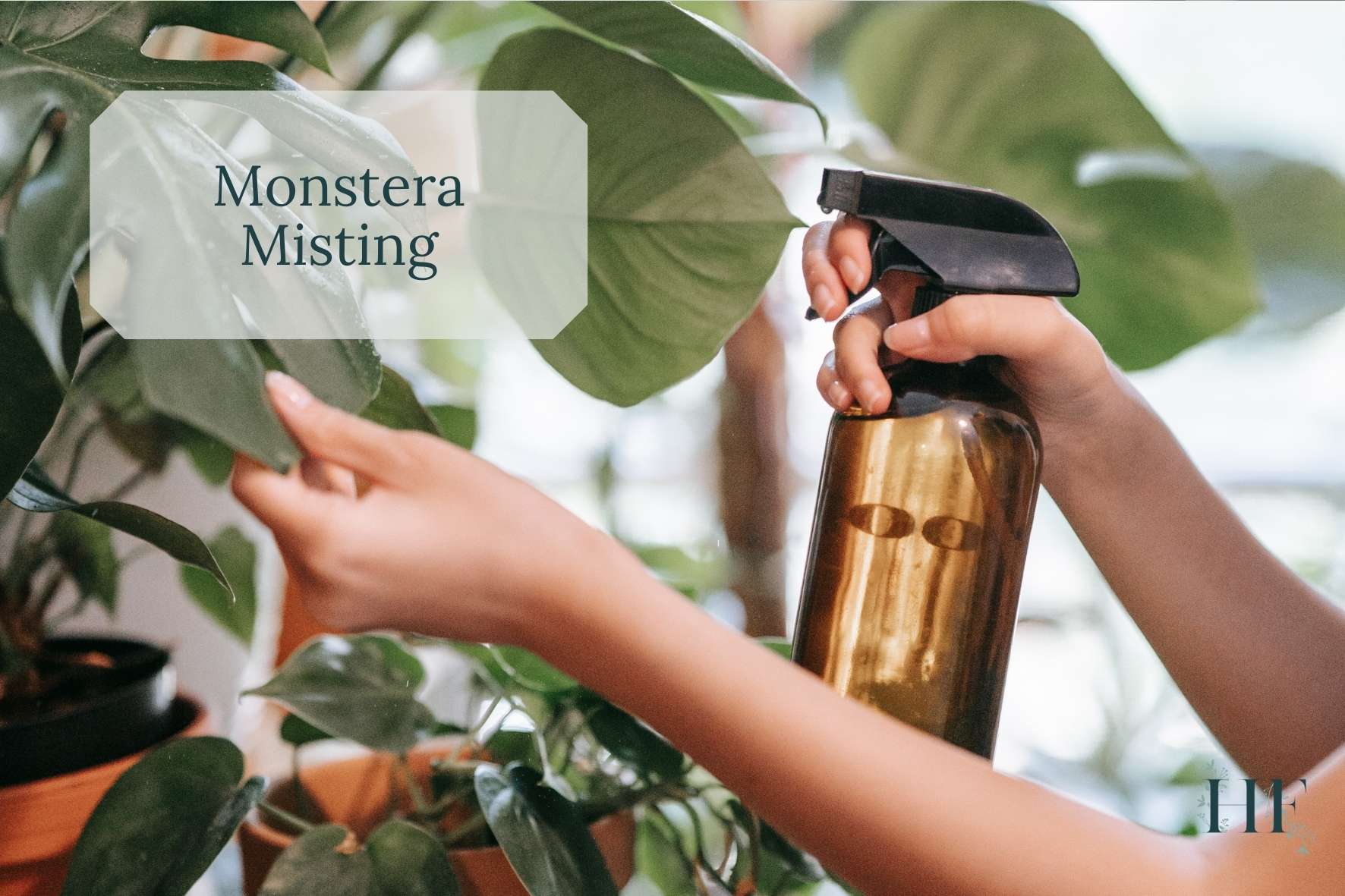
Does Monstera Like to Be Misted?
There are divided opinions on misting Monstera plants.
You can mist your monstera plant, but misting alone will not help with their humidity needs. There are other more effective methods than misting to increase the humidity levels, including humidifiers and pebble trays.
If you want some tried and tested solutions to increase your home’s humidity levels, then I would suggest you read this article till the end.
Misting adds humidity for a short period of time only. Plus, if you live in an area where the relative humidity is below 40%, misting won’t make much of a difference.
There can be some downsides to misting too. It increases the probability of pest infestation and fungal diseases. The water droplets from misting will stay in the leaves for a longer period of time if the humidity levels are already high. And if the air circulation is not enough, you will end up with bacterial diseases and pest problems.
Insider Tip: If you are concerned about the dust layer on Monstera leaves, rather than misting, you can use a wet soft cloth to clean the leaves.
However, if you are training your Monstera on a moss pole, you will want to mist the pole as needed. You can use a glass mister since plastic degrades.
How Often Should I Mist My Monstera Plant?
You can mist your Monstera a few times a day or every 1 or two days, depending on the climate of where you live.
Remember that the benefits of misting your Monstera are short-lived since water evaporates too quickly in hot temperatures. You probably want to find more effective methods to raise the humidity levels.
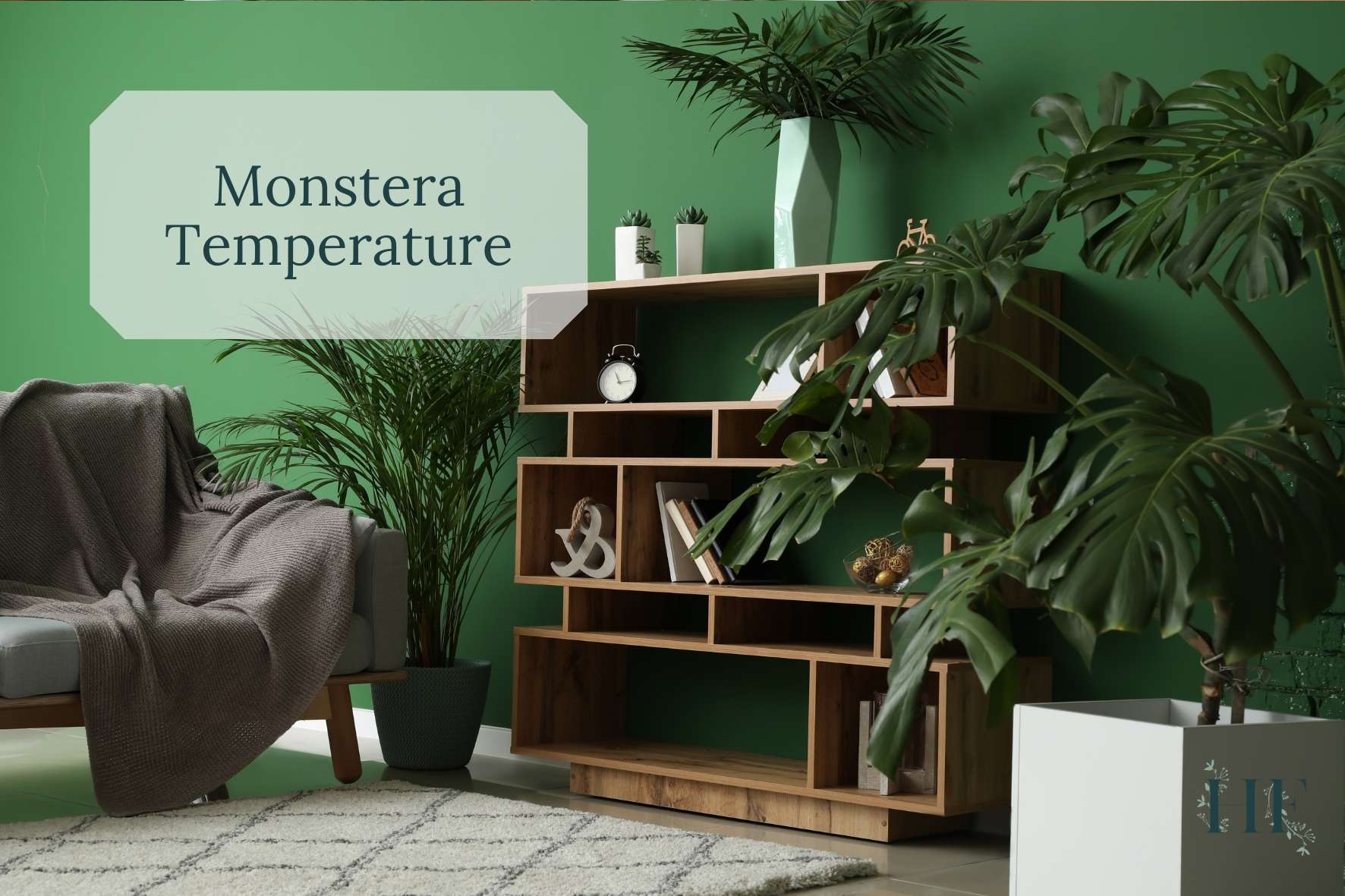
Monstera Temperature
Since temperature influences humidity levels, it’s good to know what temperature suits your Monstera plant.
Native to tropical regions, Monstera plants prefer warm temperatures. The ideal temperature range for an indoor Monstera is between 20 to 30°C (68–86 °F).
However, they can continue to grow in slightly lower temperatures. Although, below 13ºC (55°F), a Montera’s growth will slow down. Temperatures below 10ºC (50°F) can shock and kill the plant.

7 Tips to Increase Monstera Humidity
Here are some tried and tested solutions to increase humidity for your Monstera:
1) Invest in a Humidifier
A humidifier is by far the best solution for humidifying an entire room.
So, if your humidity is low and you want your humidity-loving plants (including Monstera) to grow in optimal conditions, you could get a humidifier. The one I recommend is the Levoit humidifier, which provides both warm mist (closely replicates humidity in the wild) and cool mist types.
The rest of this list provides solutions to fractionally raise the humidity and it’s suitable for people that already have a moderate humidity level.
But for those whose humidity levels are on the low side, a humidifier can give you the boost you need.
When using a humidifier, bear in mind that high levels of humidity (60% and above) can damage your home and you can get mould.
Insider Tip: The larger the space, the higher the water output you will need (i.e., the litre capacity of the humidifier needs to be bigger).
2) Mist Your Monstera
As mentioned before, misting your Monstera is a short-lived solution. So, it’s up to you to assess if your Monstera will benefit from misting after taking into account the humidity levels of the room and the climate in your area.
Personally, as much as I love my Monstera, I don’t want to be misting it twice a day, especially since the mist evaporates very quick where I live.
3) Put Your Plant on a Pebble Tray
Pebble trays are more effective than misting, simply because it’s more permanent. That being said, this solution cannot increase the humidity of a room but works well for enclosures.
This method also works well if you are going away for a week or so and you want to have a steady stream of humidity.
Insider Tip: A pebble tray will be more effective in warmer temperatures since the water will evaporate more quickly.
Here’s how you can make a pebble tray:
- Find a shallow bowl or saucer.
- Put a layer of pebbles in it.
- Fill it with water.
- Put your plant on top.
The point of the pebbles is to ensure that your Monstera plant isn’t sitting in water.
It’s best to regularly clean the tray to avoid any bacterial growth.
4) Create an Indoor Greenhouse
A sealed greenhouse or cabinet is much easier to keep humid than an entire room. If you live in a dry climate, this could be a great option to consider.
A greenhouse provides the best results because it traps the sunlight making the inside warm and increasing the humidity levels. Plus, all plants are grouped together, which helps to produce and maintain the humidity inside.
You can even place a hygrometer inside to keep an eye on things. And if the light is a concern, you can also add some grow lights.
Greenhouses are a little more complicated to maintain and you need to find the right fit for your Monstera. If you have a huge Monstera Deliciosa, a greenhouse won’t work and you may want to invest in a humidifier instead.
When looking to create your own indoor greenhouse, look for a metal cabinet with glass doors. Ikea reportedly has two stylish options that have become quite popular among houseplant lovers.
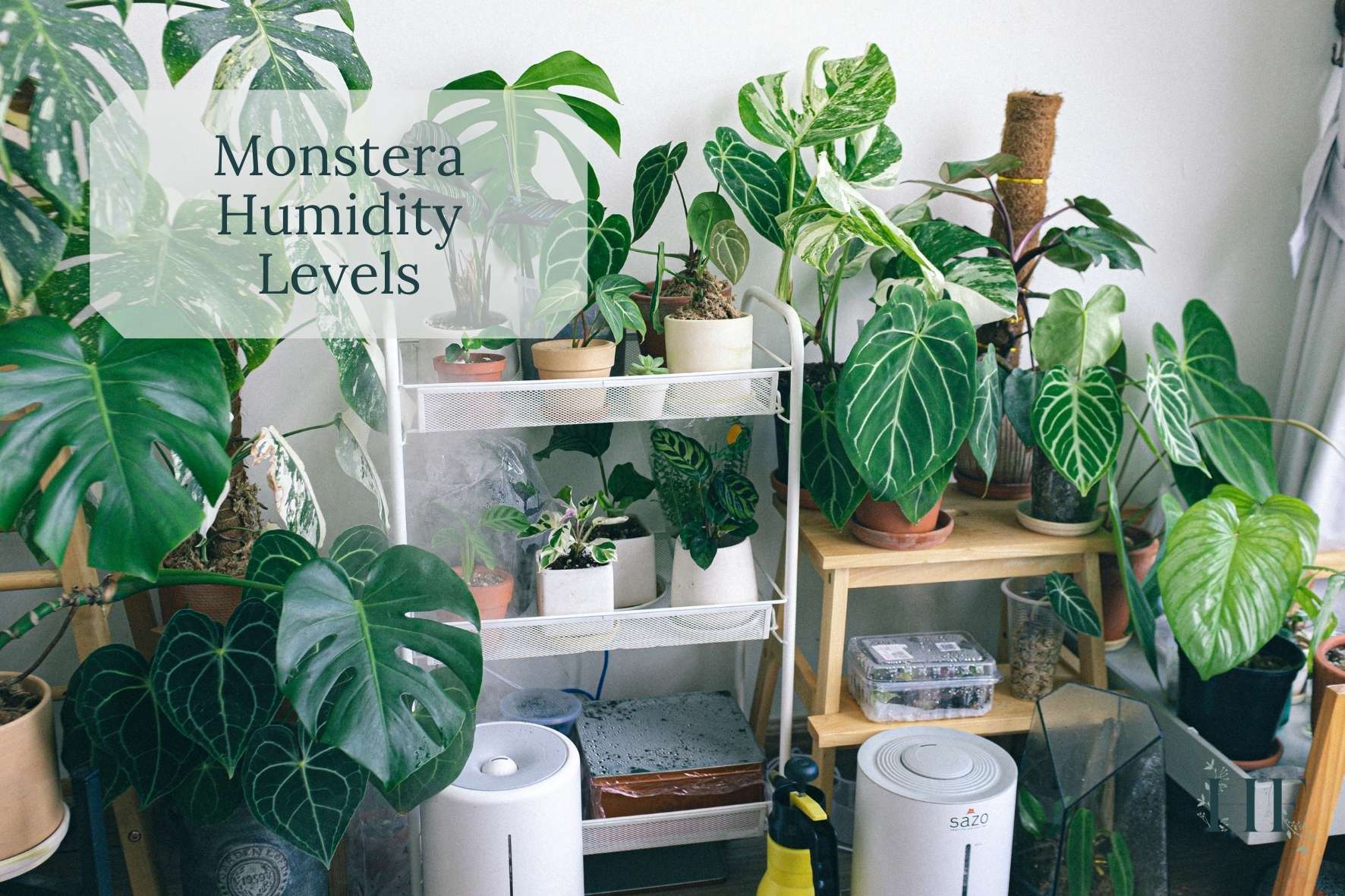
5) Group Your Plants Together
One of the easiest ways to increase humidity is to group your plants together. I do this all the time, and I create more groups when I’m away.
Plants produce water vapour by transpiration, which increases the overall humidity levels. So, when you group them together, they create their own little microclimate.
Consider clustering your Monstera with other houseplants so they can share humidity.
Insider Tip: Grouping plants together works even better if you can put them all in a small, warm room.
This method is especially effective if you have a lot of houseplants in one room. Just make sure that they all have enough space around them and aren’t crowded together. They all need access to light and air to thrive.
6) Keep the Doors Closed
This is an obvious one, but it makes a massive difference, especially if you only have a small humidifier, or if you are relying on non-humidifier methods.
When you close the door, any humidity present will be more concentrated.
Insider Tip: The smallest and warmer the room, the easier it will be to increase the humidity levels whilst keeping the door closed.
7) Move Your Monstera to More Humid Rooms
When possible, you can also move your Monstera plant to a more humid room like the bathroom, kitchen or even laundry room!
Of course, you want to make sure that there’s plenty of light in the room and that the temperature stays warm enough throughout the year.
Final Thoughts
If you want to try and meet your Monstera’s needs beyond the basics and encourage its growth potential, increasing humidity should be on your list.
A pebble tray or misting works to increase humidity for a limited time, but investing in both a hygrometer and a humidifier is the best way to monitor and control the humidity around all your houseplants.

